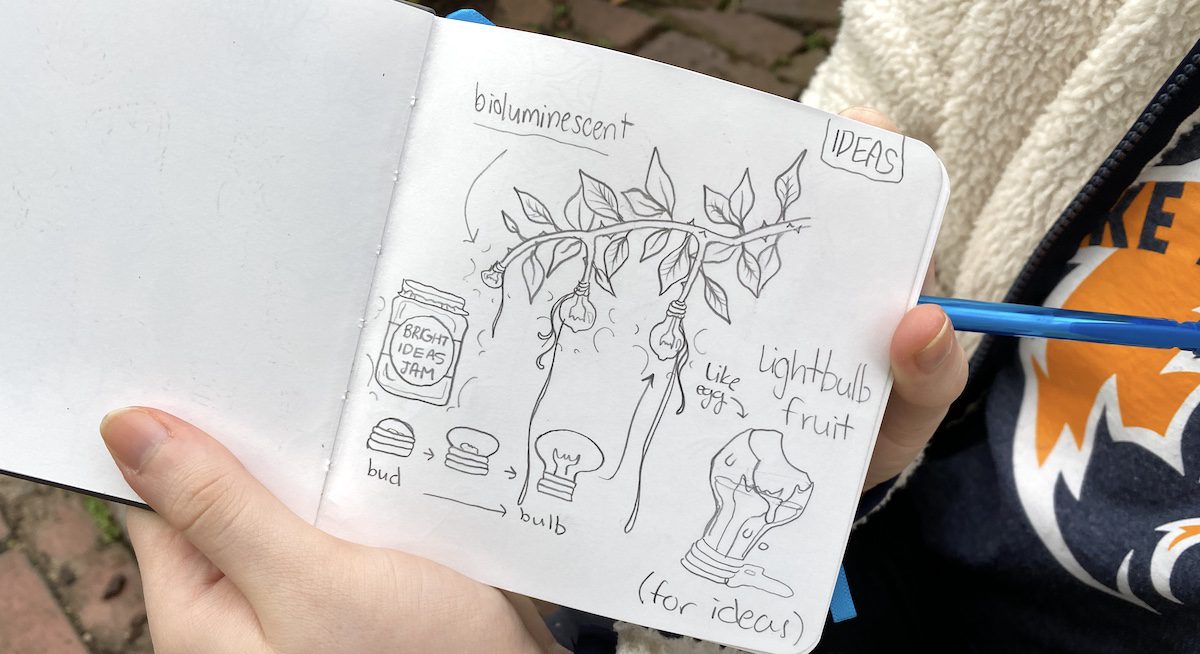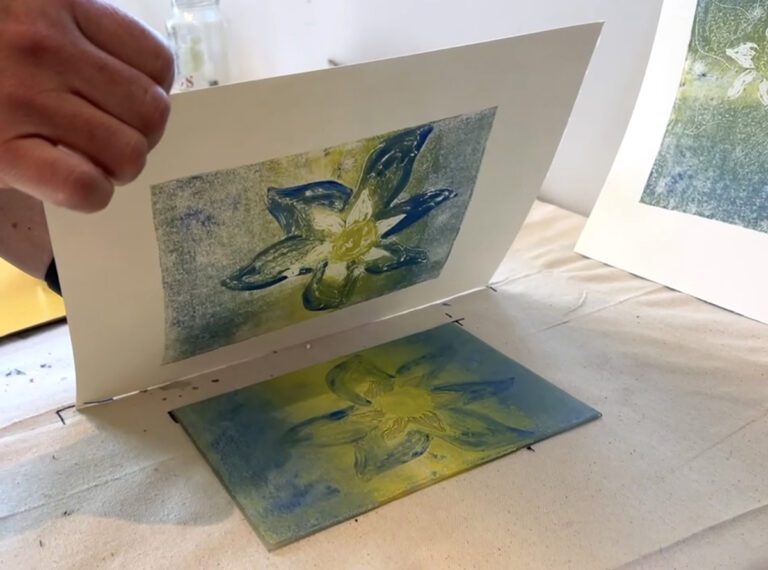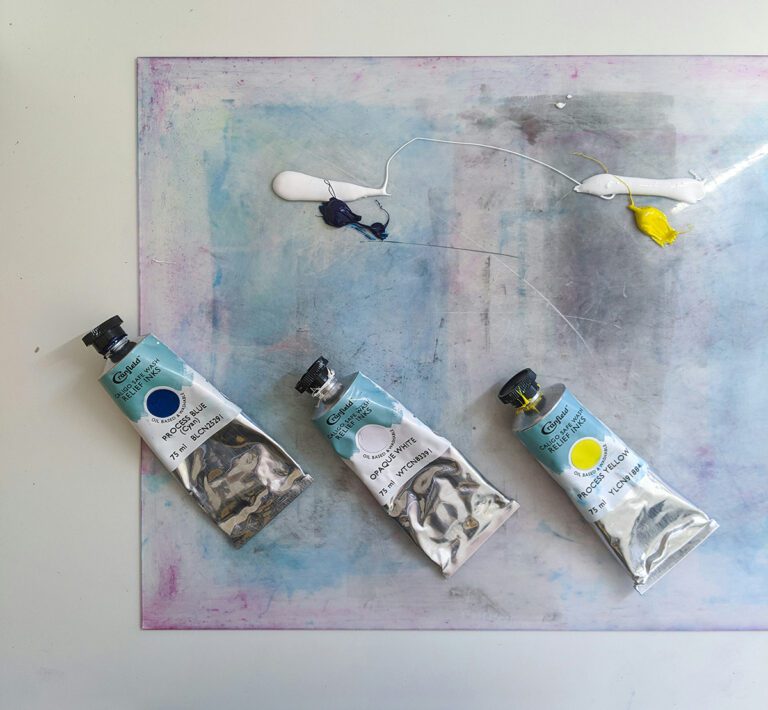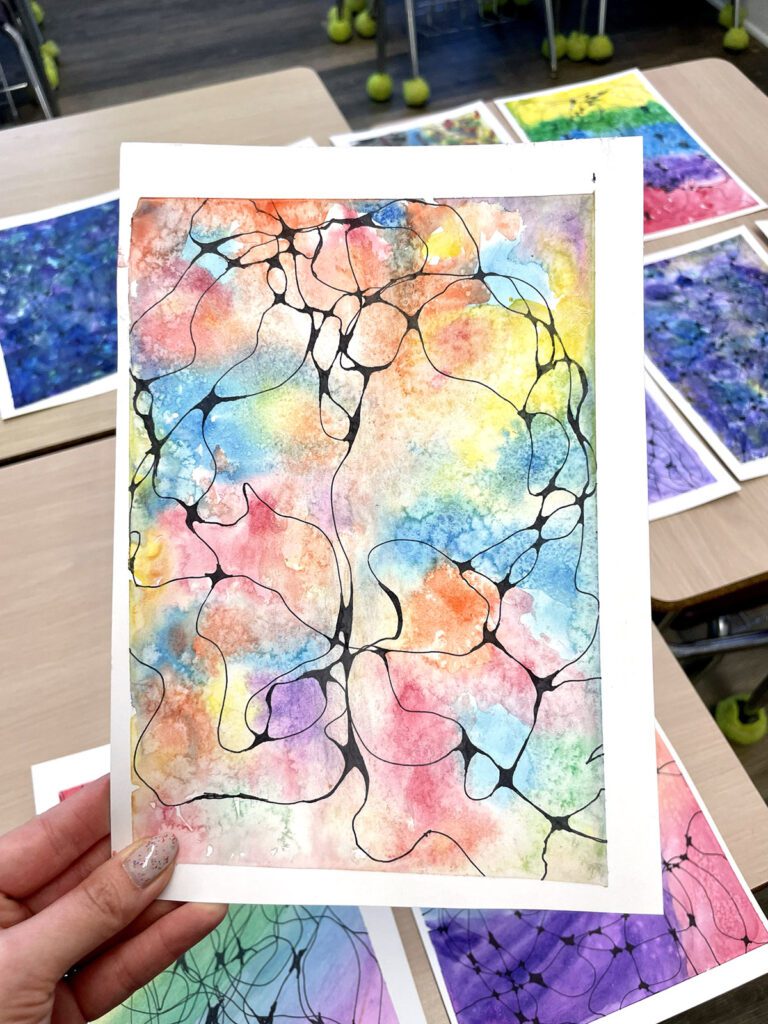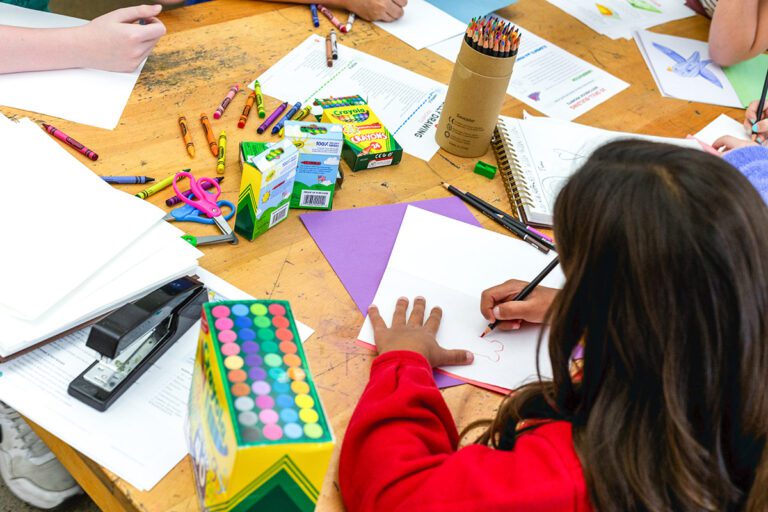Return to Learn with The Art of Education University
How can you use nature beyond the traditional landscape painting? Whether your class is fully in-person, fully online, or in some hybrid situation, nature is the perfect connection to get students away from their computers and into the present moment. No matter which media you teach, push your students’ thinking with these four key concepts.
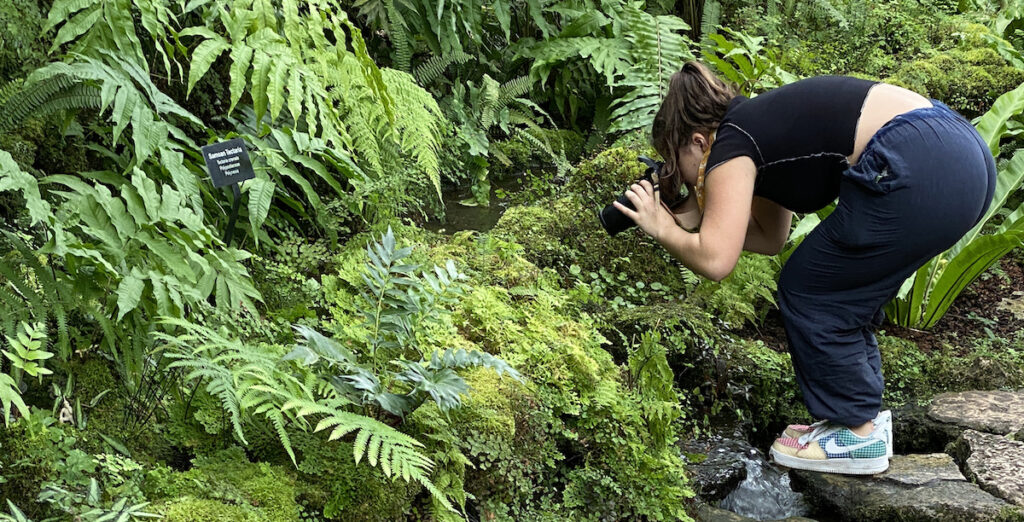
Concept 1: Observation and Imagination
Traditional lessons, such as landscapes and still life are incredibly valuable lessons. Take time to explore media through safe, expressive landscapes. Develop and hone observation in a still life setup. Exploring ways to document your observations as well as combining imagination into your lesson will push students to think outside-the-box.
Deep Observation:
Scientific drawings of plants, animals, insects, and any lifeform will hone observational skills, as students linger on one subject at a time. Students must pay close attention to detail and do so from multiple angles while considering how each specific quality of the subject serves a purpose. Incorporating watercolor or color pencils amidst clean ink drawings with annotated text helps a student consider color palette and composition on a given ground.
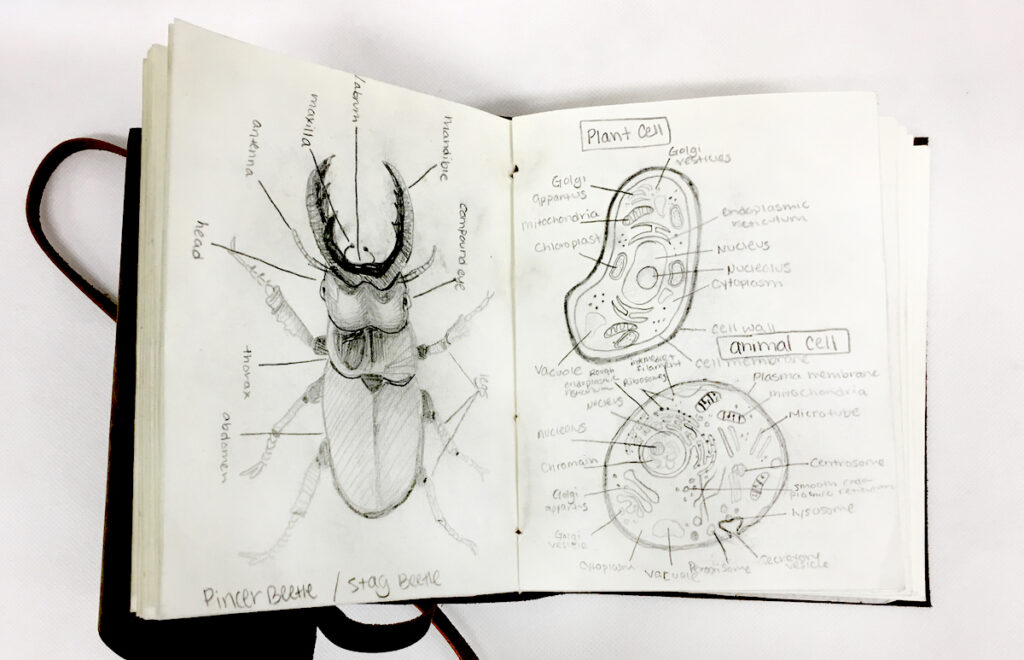
Engage the Imagination:
Engage the imagination by developing new plant or animal species. Through photography, students search for and collect information about a particular plant, animal, or insect. Then, students can apply their observational skills of given life forms to create an adaptive species through digital manipulations.
How might a cactus eventually adapt to the Rocky Mountains in order to survive? What types of beetles would find a home curled up inside the petals in a tulip field? Not only are students observing the physical qualities of their subject matter, but they are also considering the adaptive possibilities as well. Students can imagine other worlds and develop environments for their new species to inhabit.
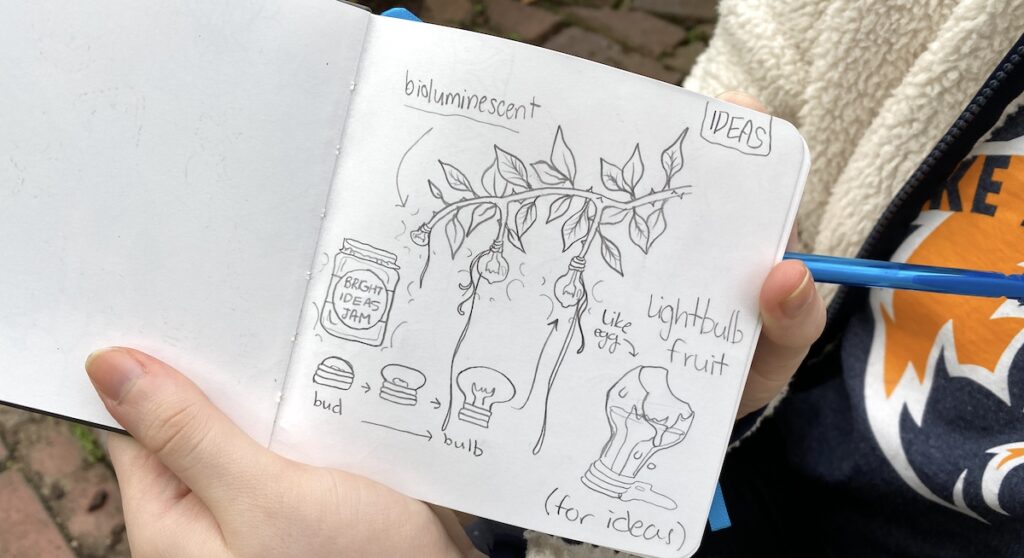
Concept 2: Abstraction through Elongation and Distortion
Teaching students how to abstract their observed subject is a challenging task. There are many tips and tricks for this, but emphasizing elongation and scale distortion help students look beyond their preexisting subject. When considering abstract sculptural works, take a look at artists such as Barbara Hepworth with her large-scale, organic forms and Henry Moore’s biomorphic works.
Abstract luminaries:
Reed and rice paper forms introduce weightlessness and luminosity to your abstracted forms. Students observe a variety of plant and pod forms to create a skeletal reed form that twists and turns in space. Seashells and urchins are also great natural resources to observe when creating structures.
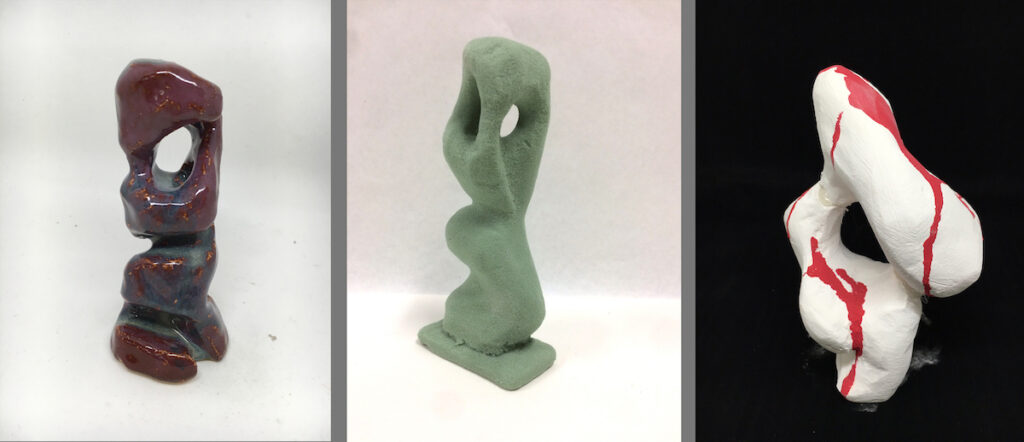
Subtractive Biomorphism:
Plaster is a fun subtractive material to work with as students consider how to abstract their natural research. Using photos of nature and tracing paper, students can trace, combine, and reshape their images into nonrepresentational biomorphic sculptures.
Starting with an additive clay maquette, students can explore forms and textures from a small-scale approach. Pinching the clay to exaggerate one area, elongating lumps to form bending tendrils in different directions, or flattening out bulbous areas helps students explore forms through a low-stakes opportunity. Subtractive carving can be hard! Once students feel comfortable with their additive clay forms, they can practice carving using floral foam (with safety goggles and dust masks) and then move on to their plaster blocks.
Concept 3: Emphasize with Layers
Layering textures is a great way to incorporate nature into any art form. How can you use texture without it getting too overwhelming and muddy?
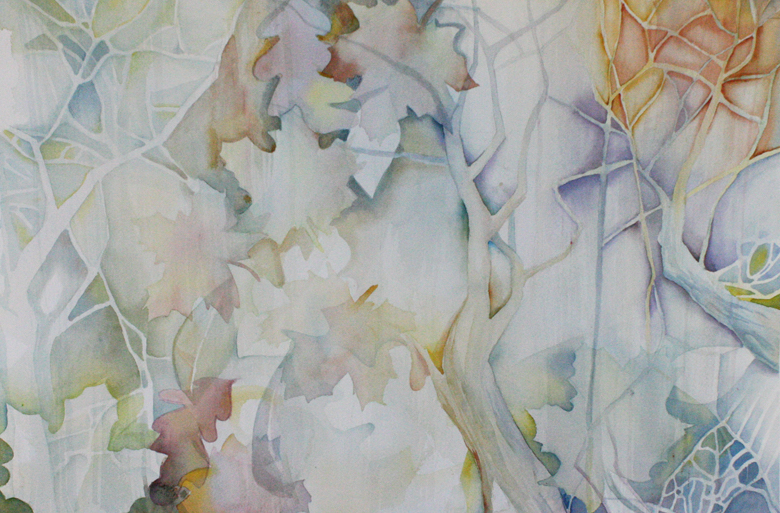
Repeat Layering:
Taking a hike through your local forest preserve, or visiting your state or national park for the day can lead to exciting textures and color palettes for inspiration. High school art teacher, Janell Matas, uses a variety of emphasis and suppression techniques to create visual movement. Students not only practice layering textures but also explore emphasizing a focal point.
Don’t forget, suppression also goes hand-in-hand with emphasis. If areas of the work are competing for attention, overall cluttered, or too saturated, use suppression techniques to tone down and ease the viewer toward the focal point.
Layering Photography:
Try combining textures and portraits to demonstrate layer effects in photography. Students can play with blending modes in Photoshop or use free online apps like Pixlr and Polarr. These techniques are fairly straightforward and will create instant success to build confidence to stretch and explore.
For example, what happens when you move your image layers around? What effect does desaturating one layer have on the work? Why not try using color pencils to colorize your black and white analog prints? Make connections with double exposure or explore silhouette layers to tell new stories.
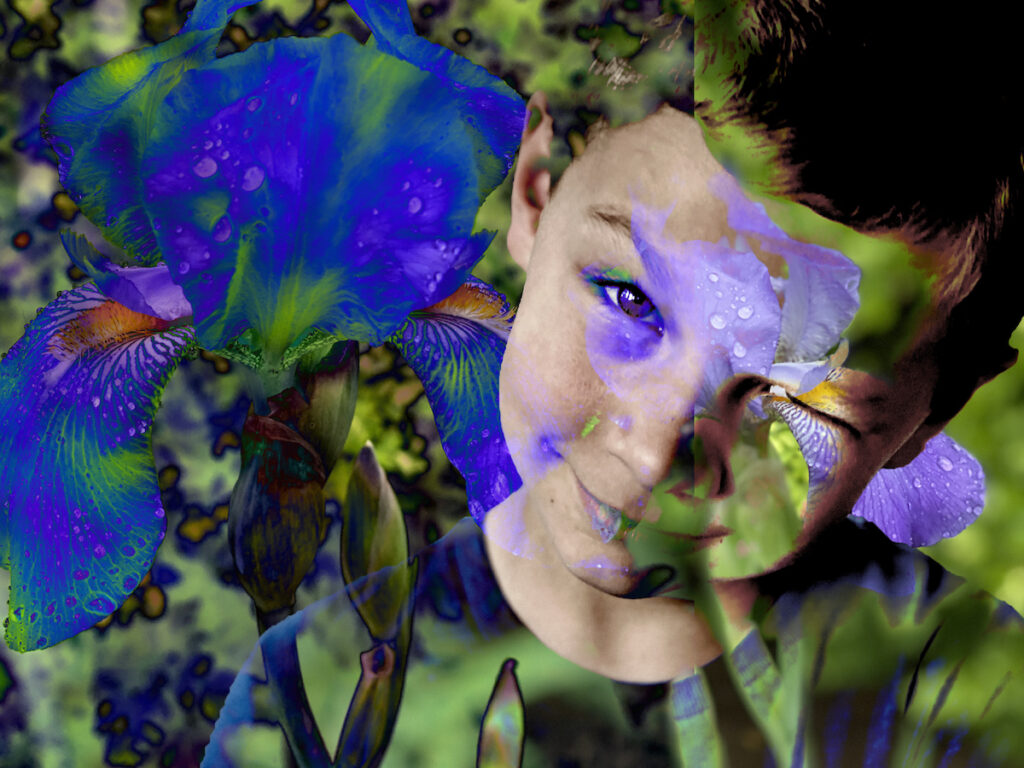
Concept 4: Combine and Transform
Try combining and transforming both form and texture. What happens when you cross-pollinate two very different plants? Transforming a common plant or fruit form through imaginative qualities pushes students to both carefully observe and also consider alternative universes. Take a look at sculpture artists such as Lindsay Feuer, Alice Ballard, and Sarah Rayner, who all make artworks inspired by plant life.
Return to Learn with The Art of Education University
Resurface Your Form:
Art teachers, Rebecca Mancuso, Danielle Figueroa, and Greg Padgett at Naperville Central High School in Naperville, Illinois, collaborated to develop this ceramics pinch pot lesson. “Space Fruit” is a perfect example of considering both form and surface quality through observation of a variety of real fruits and plants as well as a variety of existing textures.
Using their imagination, students explore ideas of otherworldly combinations such as hairy eggplants, thorny bananas, and spiraled pineapples. Learning how to manipulate a pinch pot form and a variety of embellishment techniques in a playful and imaginative way provides the perfect setup for a semester of clay creations.
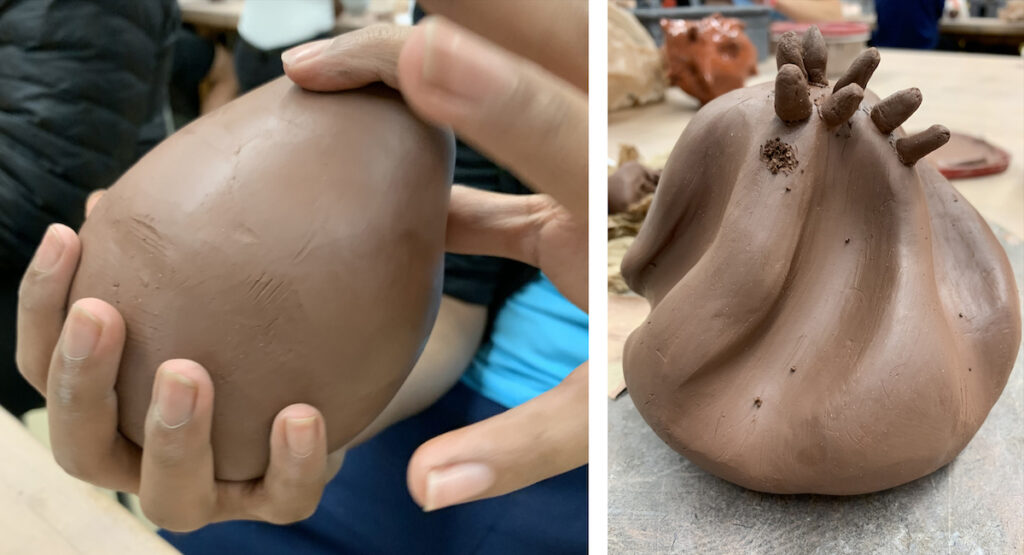
Trekking out into nature, students’ souls are fueled by the grounding capacity of nature, fresh air in their lungs, and time to be silent. Instead of a particular outcome, consider overarching concepts to help support student voice through choice. Whether honing technical skills or stretching their imaginations, students will benefit by tying nature to their learning.
How do you tie nature into your lessons?
What concepts can you think of to connect students with nature?
Where are your favorite places to go to observe nature?
Magazine articles and podcasts are opinions of professional education contributors and do not necessarily represent the position of the Art of Education University (AOEU) or its academic offerings. Contributors use terms in the way they are most often talked about in the scope of their educational experiences.
